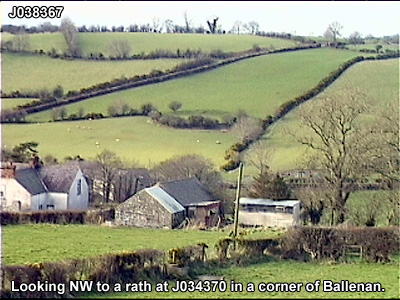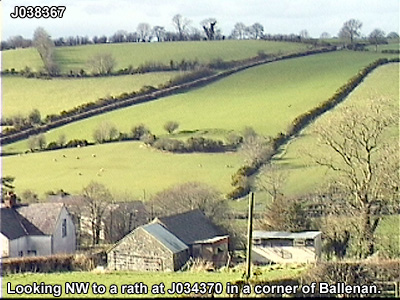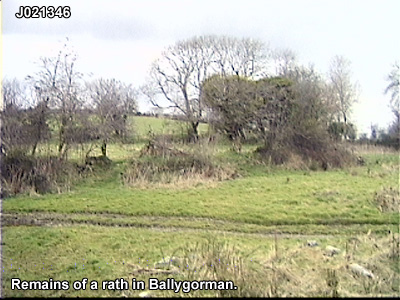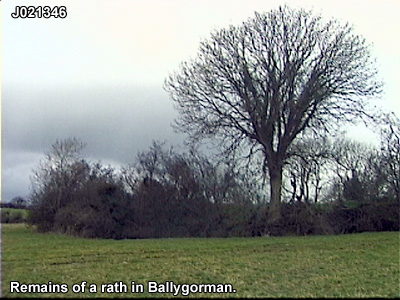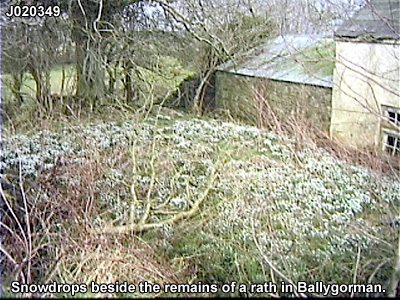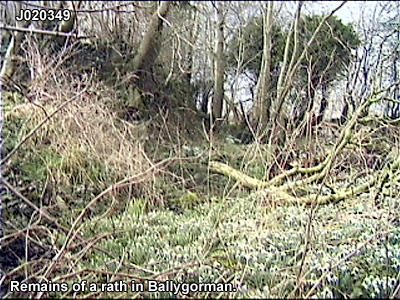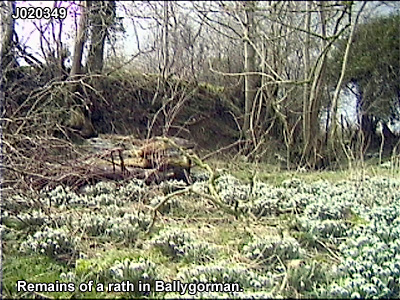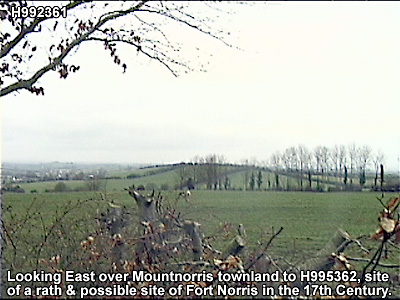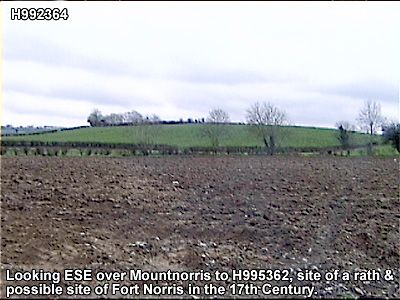
Dating from the Bronze Age, raths are enclosures used originally as places of refuge and sometimes for burial. They were once common features, dotted around the rural landscape of Ireland. Often they were made by digging a circular ditch and piling the earth up into a bank on the inside. To help in defence, a second or even a third ditch might be added. Some were roofed over to be used as fortified dwellings and as a defence against enemies. Raths constructed with dry-stone walls or banks faced with stone are called cashels.
On occasion they were connected to souterrains or underground tunnels and chambers hewn out of the rock or clay. These had shafts for ventilation for when the dwellers were using the rath as a place of refuge. This mode of defence was abandoned, as it was possible to smoke the people out. They were adapted to the storage of valuable food supplies, which could thus be kept out of reach of the hands of the scavengers and rival clansmen.
Locally there are several raths within the Gosford Estate although, as with many of these ancient dwellings, very little remains as an indication of their original appearance. On many occasions, local farmers have removed the stones to accommodate farming with modern technology.
The best preserved cashel in the area is to be found on Cashel Hill near Seagahan, approximately half way between Markethill and Keady in a northern area of the Fews Mountains.
Although much of the circle of stones is now overgrown, it is still possible to detect the scale of the ring. Measuring thirty-six yards in diameter the cashel is connected to a souterrain or maze of underground tunnels. The cashel is known locally as 'The Relig', relig being the Gaelic word for graveyard. It is believed that a fallen pillar near the cashel denotes the burial place of an ancient King. It was within this enclosure that the largest amber bead in Ireland was discovered.

Use the audio controller to listen to this talk, given in 2003.


















